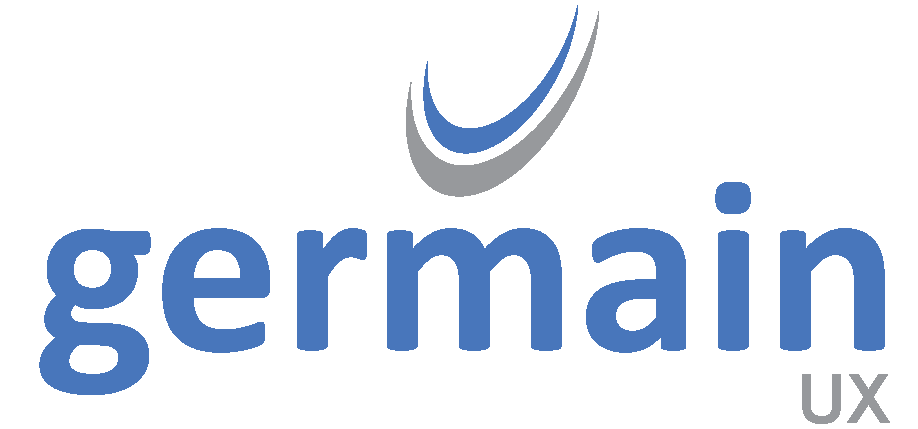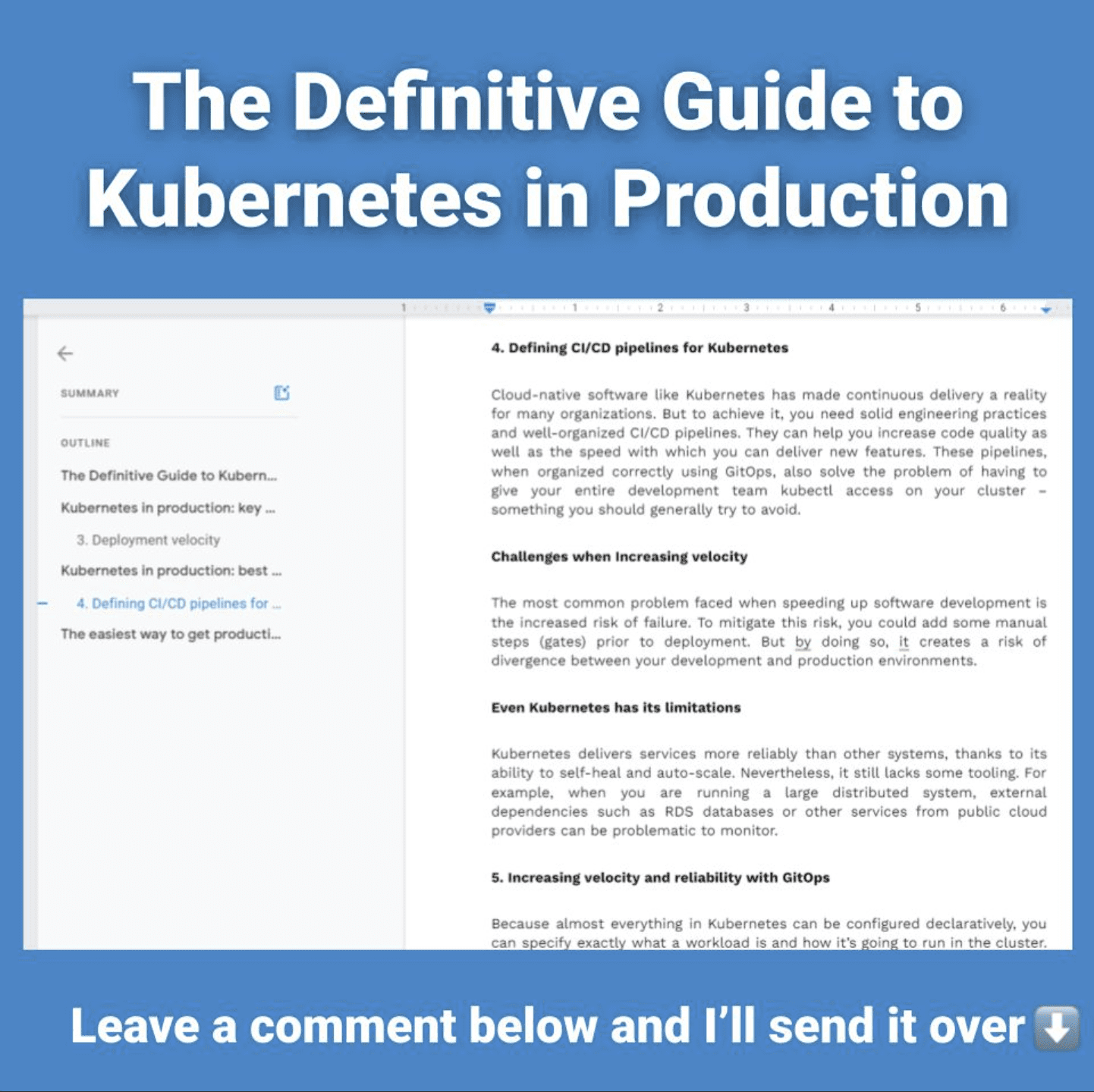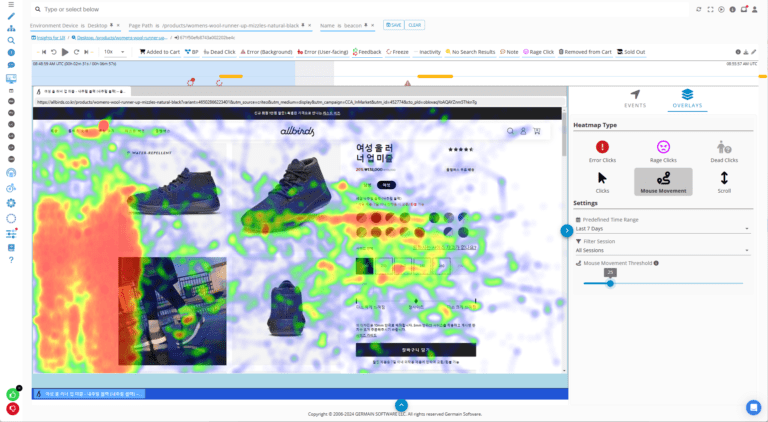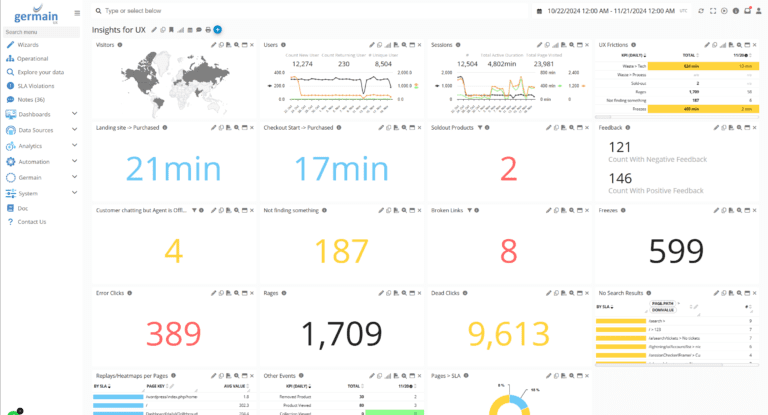Kubernetes has quickly grown in popularity, also due to its flexibility and power as a container orchestration system.
It can scale virtually indefinitely, which has enabled it to provide the backbone for many of the world’s most popular online services. Plus, it is accessible and easy to set up.
But, Kubernetes also comes with a few challenges in production, including:
❇️ Security
❇️ Portability and scalability
❇️ Deployment velocity
❇️ Disaster recovery
❇️ Observability
❇️ Portability and scalability
❇️ Deployment velocity
❇️ Disaster recovery
❇️ Observability
But there are mitigation strategies for each of these. So here’s a guide to Kubernetes in production, covering the following best practices:
✅ Team application development
✅ Advanced protection in production
✅ Data storage
✅ Defining CI/CD pipelines
✅ Increasing velocity and reliability with GitOps
✅ Advanced protection in production
✅ Data storage
✅ Defining CI/CD pipelines
✅ Increasing velocity and reliability with GitOps
Plus, we at Germain UX can support 1) uptime & performance monitoring of any Kubernetes container, and 2) our platform can be deployed within the Kubernetes container. Interested? Let’s chat.
In the meantime, if this guide is of interest to you, comment below and I’ll send it to you ASAP. Please send a connection request if we are not already connected to get the resource.
Germain UX – Improve Sales Processes and UX in Real-Time
Credit: Weaveworks




